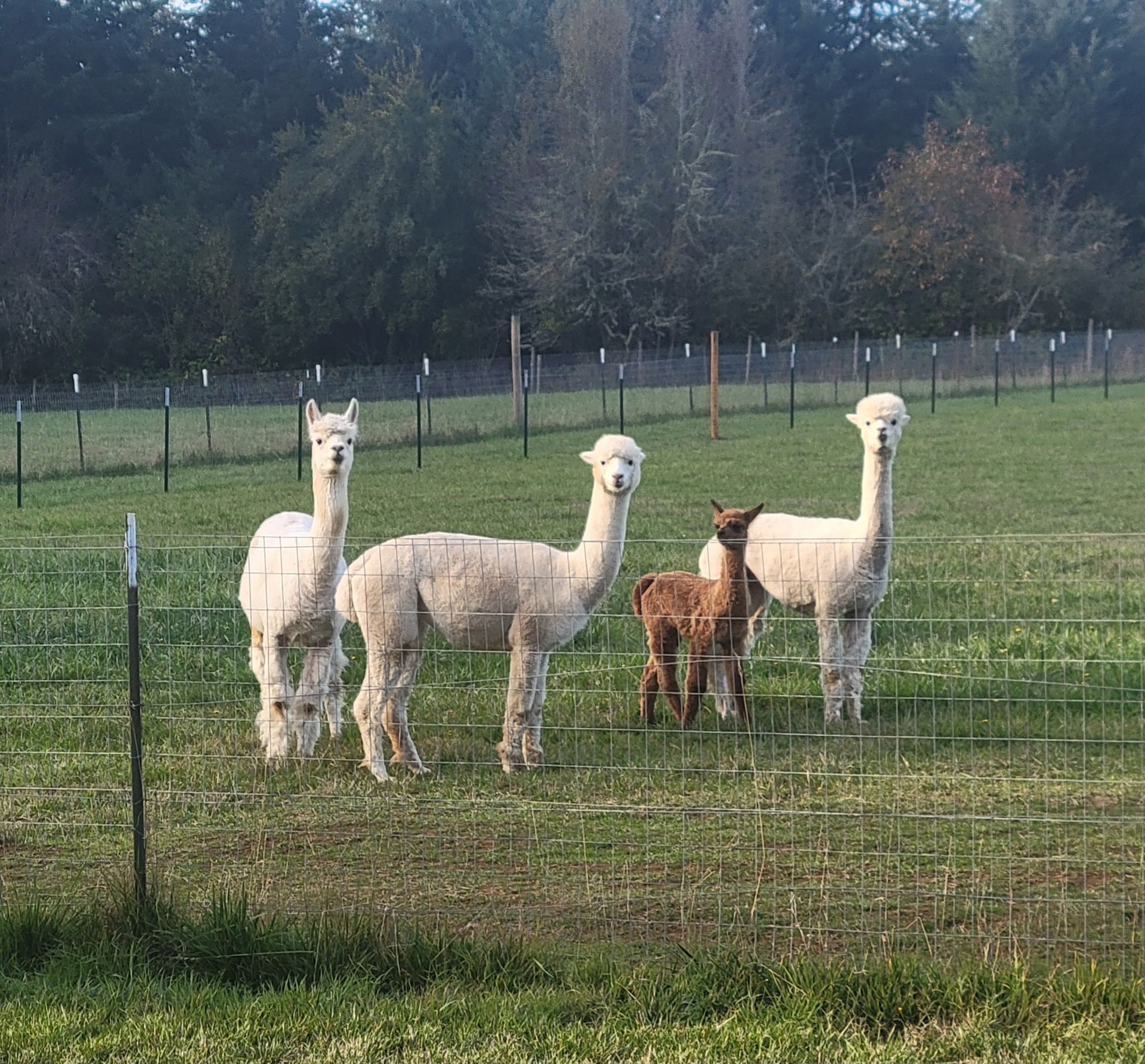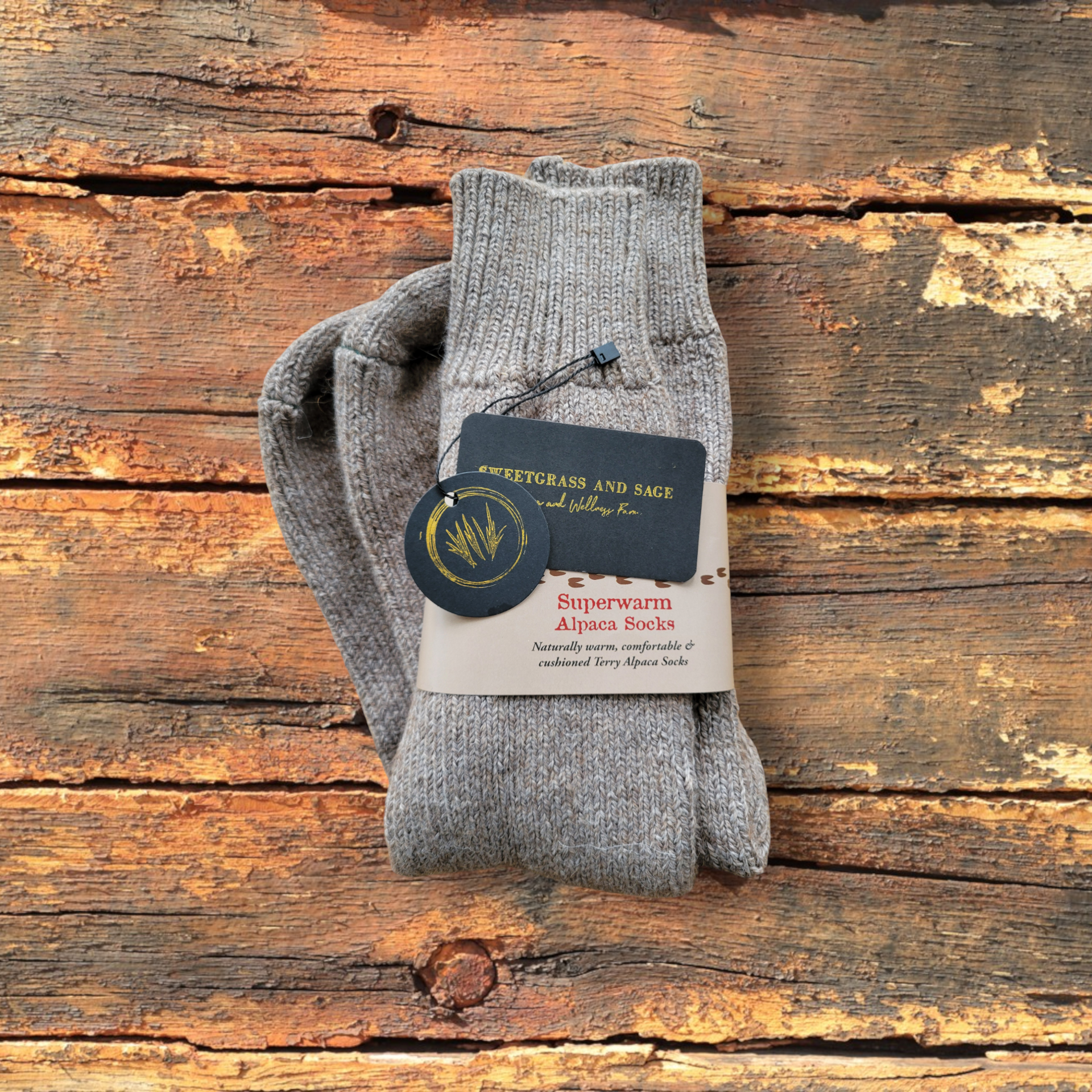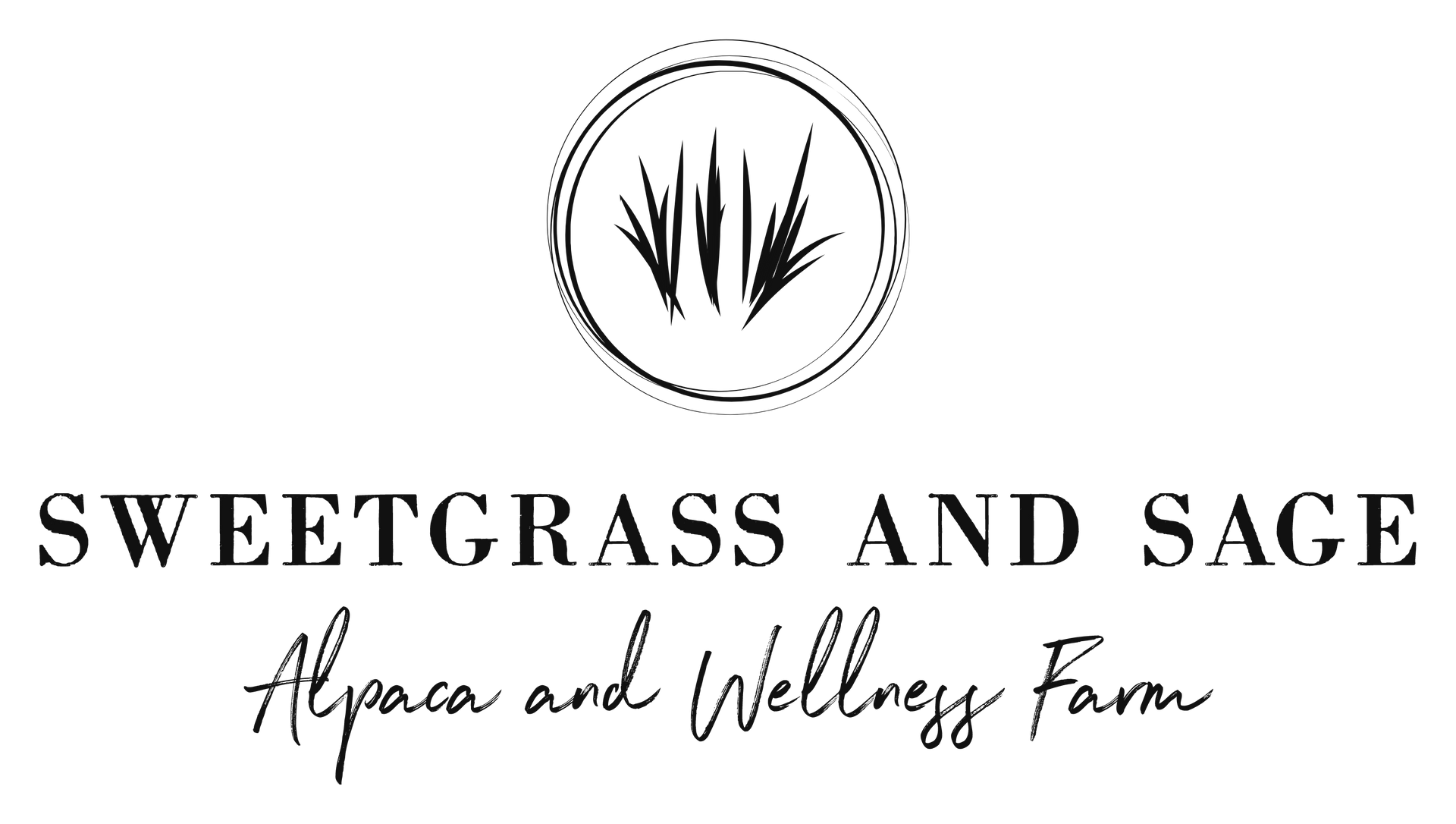Shearing Day 2024
Spring 2023 was our first, but 2024 was twice the experience! Our herd has grown to 4 boys, so we decided to outsource the shearing to TopKnot Alpaca Care. Seth and his crew did a great job, we will use them again next year as we will be adding the female and cria pasture late this year/early next. Nails, teeth, shots and shearing is a great value. They were organized, cared about how we preferred our fleece cared for and overall courteous and respectful!
For those who experience this ritual annually, and with numbers beyond our 4, our hat is off to you! It is a process, and prep for the event will help to have a successful day. You need to ensure you have the herd penned up and ready for their turn. If you have females and babies, you need to have them in a separate paddock or holding pen. We prefer to weigh before and after shearing to gauge fleece weight, so having a system to effectively manage that is imperative. Fleece management system, with labels and enough bags for firsts, seconds and dryer ball... Don't forget that sample bag for the histogram. 'That' is a blog, 'in and of itself', sending samples to New Zealand was a process! And, finally, immunization prep. We chose to treat the boys with subcutaneous shots for parasites and CD&T, after fleece was removed for easier access. 4 males weren't too bad, but there were 5 of us to manage.
There appears to be a universal approach to restraint of the animal during shearing. using two opposing locations to tether front and rear legs pulling the animal into a fully stretched out position. I have seen YouTube videos of other ways, but this approach allowed for quick work and since alpaca prefer not to be handled, I would suppose this approach would be preferred, over longer periods of handling. Our handlers moved quickly, one began by gathering our sample from the flank of the animal in an area of the blanket where you generally get the best fleece, then on to shearing the blanket, or the 'first' cutting. The blanket, which is removed from the back and sides is generally the best quality of the fleece, due to the length of staple. Spinners prefer long fiber when making yarn, as it is easier to work with. 'Seconds' is the rest of the fleece taken from alpaca's neck and legs.
The alpaca spa continues with trimming of teeth. Ok, this one can be harder on the untrained person. First off, an alpaca does not have a top row of teeth in the front. They have a soft pallet that the lower teeth meet to pinch grass against when they are foraging. An ideal alpaca has lower teeth which align with that top pallet and do not extend beyond. If their lower teeth extend, it becomes difficult for them to eat so grinding these teeth down help the animals health but trimming with a grinder leaves a smell that is undeniably distinct! Oh boy! Next is the fighting teeth. 3 of the boys are younger (2-year-olds) and haven't developed these hooked menaces yet but Mort, our older gelding does have them, and they needed to be removed. The males will fight each other for breeding rights and the intent of these teeth is to hook onto the testicles of other males while they spar. Males fighting is quite the ruckus experience (Blog at a later date)! Since Mortimer has been gelded (before coming to our farm), he is relatively docile, but we want to be sure the other boys remain intact. So 'off' they go! There is a tool that makes short work of them. This is painless as there are no nerves in the tooth.
Finally, the pampering (lol) is complete with toes, final trimming of the topknot, followed by subcutaneous shots. All of this happened for us simultaneously since there were so many of us. We release the front legs during these closing moments to let the alpaca begin to get its bearing again. Once everyone has cleared, we assist the packy to its feet and guided it over to the chute with the scale for final weight and into the holding pen with the other walking Q-tips.
Fleece weight and blanket weight are calculated to determine yields, the bags with fleece are left open to allow them to dissipate any moisture but once fully dry they are tightly sealed awaiting to be processed. We had one of our full fleeces weigh in at 11.5lbs and his blanket was 5.8lbs.
Sounds like we will be processing 2023 and 2024 fleece soon. Stay tuned!



